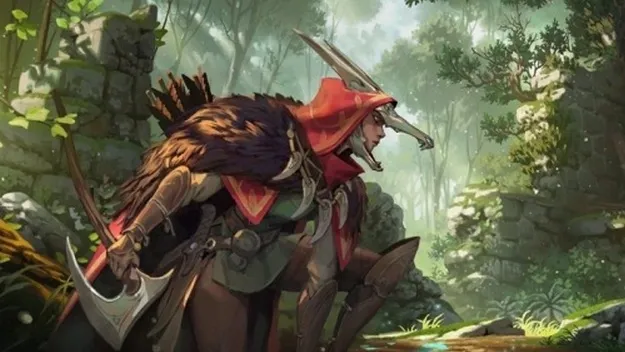Tetris - On this day
The legendary Tetris is celebrating its 37th birthday today and it is an ideal opportunity to recall the fascinating story of one of the most important video games in history. It is a story of genius that has not been stifled by politics, a story of success in the most complicated conditions.
Tetris was created as a game for a Russian computer called Electronics 60M. The creator of the game was Alexey Pajitnov, an employee of the then Soviet Academy of Sciences. He developed Tetris in his work, as a side project to explore artificial intelligence. He came up with the main idea of Tetris based on the mathematical game Pentomino, which he often played as a child.
The Electronika 60M was not hardware advanced and could not display anything other than text characters and numbers at all. Pajitnov, therefore, had to simplify the concept of the Pentomin by reducing the blocks from five squares to four squares, that is, from 12 types of blocks to 7 types of blocks. At first, the concept of the game was banal - the player had to put all the blocks together like puzzles and that would end the game. However, Pajitnov noticed that it would be interesting for the players only for the first time, and if they understood the principle of agreement, the game would become boring.
For this reason, the concept of falling blocks was created. The game became less predictable because the player did not know which block to follow, and he had to stack the blocks under the pressure of time. However, that concept lacked something else because the game would end quickly if the blocks covered the screen, regardless of whether the player filled the rows or had cavities in them. Pajitnov, therefore, inserted the final idea - the rows of blocks disappeared when the player filled them, and the blocks above them then descended, freeing up space for even more stacking.
With this concept, on June 6, 1984, Tetris or Tetris was created. Pajitnov chose the name as a combination of the words tetra and tennis. "Tetra" is four in Greek, which he chose because each block in the game has four squares. He chose tennis because it was his favorite sport.
The original version of Tetris was not multicolored, had no music, weight settings, or anything like that. However, due to its addictive gameplay, it quickly became popular, first among employees of the Soviet Academy of Sciences, and then in the rest of the academic circle in Russia. Pajitn's co-workers soon switched the game to an IBM computer (MS-DOS), giving the dice color, multiple different downlink speeds, and the ability to save scores. That version of Tetris became popular throughout Russia.
The then USSR was mostly closed to Western markets, but Tetris was so popular that it still broke into Europe, more precisely Hungary. In Budapest, several students switched the game to Commodore 64 and Apple II platforms, and it was there that the game was noticed by Robert Stein, president of the British publishing house Mirrorsoft. Recognizing the potential of Tetris, Stein began to inquire about the possibility of distributing the game in Western markets. However, as Pajitnov made Tetris at work, the game was technically owned by the state.
This greatly complicated the breakthrough of Tetris outside the USSR. While the Russians were procrastinating with the negotiations, Tetris had already gone on sale before distribution rights were granted. From all this, a great deal of legal entanglement arose, primarily because numerous companies competed for the rights to publish Tetris, and the Russians shared the rights individually for different platforms.
When the game was about to go on sale in the U.S. market, publishers faced a new challenge. Tetris was not an action game, it had no shooting, jumping, or opponents. Therefore, a different way of promoting the game had to be devised. It was decided that the game would be presented as something exotic, taking advantage of the fact that it was the first game from Russia to be sold in America. For that reason, Tetris got some Soviet motifs, primarily a picture of Red Square in Moscow. Perhaps the most famous Russian motif of Tetris is its main musical theme, which originated from the Russian folk song “Korobeiniki” from the 19th century.
The battle for Tetris's publishing rights became fierce when Tetris was to come to consoles. While some companies even refused to release the game, the Japanese company Nintendo jumped on the occasion. In a fierce battle with Atari, Nintendo secured Tetris rights for portable devices from the Russians, which was a crucial moment for the Tetris franchise. Namely, Nintendo originally wanted to launch the Super Mario game with its Game Boy console in the late eighties. However, it was ultimately decided that Tetris would have a better performance in attracting players because it was universally attractive to all audience profiles, regardless of age. With 35 million copies sold, Tetris was the most popular game on the Game Boy console. But it was no less popular on computers, arcade machines, and other consoles.
It is interesting, however, that the creator of Tetris, Alexey Pajitnov, despite all these versions of Tetris, did not earn a penny from the sale of rights and games until 1996, when he moved from Russia to the United States and founded the Tetris Company there. Pajitnov continued to work in the video game industry and worked for Microsoft for some time. However, none of his games later came close to the success of Tetris.
a
Tetris has gained numerous variations and additions over the years, appearing on almost everything that had a screen. Game publishing rights have been sold to several companies, including Electronic Arts, Ubisoft, and others. We saw some great games for her in that series, but some were bad although it is often thought that the concept of Tetris cannot be spoiled.Tetris is still alive today. In 2018, it got its VR version on the PlayStation 4, and in 2019 on the Nintendo Switch console, it also worked as a battle royale title. After 37 years of Tetris's existence, one thing is for sure - it will be talked about and written about for a long time to come.












